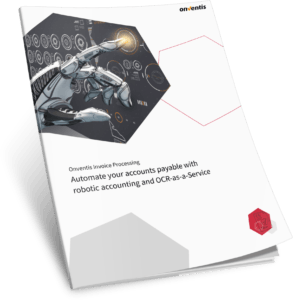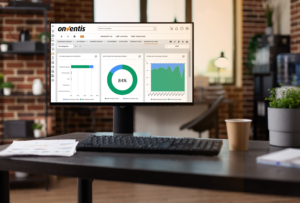What is the difference between digital and electronic invoices?
A digital invoice is usually a PDF or Word file that is sometimes a scanned paper invoice. A digital invoice is easy for a human to understand.
An electronic invoice (or e-invoice) is a data file that is transferred between computers and not easy to understand for humans. Common file formats are XML and EDI. An e-invoice contains structured data, so it is easier for a computer to comprehend and book automatically.

Digital invoice vs electronic invoice
Dated sources on the internet create a lot of confusion surrounding the correct and modern meaning for the different types of invoices, despite them being fundamentally different.
The following statements are true:
- An electronic invoice (e-invoice) contains data from the supplier in a structured format that the buyer’s financial system can automatically recognize, without requiring manual data input from the administrator.
- A digital invoice is an invoice that can be viewed and processed digitally.
- An e-invoice is always a digital file format, just like a PDF or Word file.
- A digital invoice is not necessarily an e-invoice.
Confused? I think yes. Let’s dive a bit more into the details.
What is an electronic invoice (e-invoice)?
An e-invoice is a systematically built digital file with the data in a fixed location and dedicated meaning. There are many different formats for e-invoicing and a global standard is currently missing. The most common formats are EDI and UBL.
EDI has been a popular standard for a long time, but expensive for SMEs. A growing list of governments worldwide has selected UBL 2.0 as their preferred format. The European Commission (EC) is working on its successor; UBL 2.1. This is due to become the standard format for companies that deal directly with the EC.
The following guidelines apply to e-invoices:
- Structured invoice data issued in Electronic Data Interchange (EDI) or XML formats;
- Structured invoice data issued using standard Internet-based web forms.
What is a digital invoice?
A digital invoice is an invoice that can be viewed and processed digitally. The digital invoice is easy to archive and connect to accounting software. With optical recognition (OCR) digital invoices are booked into systems semi-automatically. This contributes to lower working pressure.
Financially accessible online solution contribute to the growing success of digital invoices in favor of the old paper invoice.
What is a digital invoice, but not an e-invoice:
- Unstructured invoice data issued in PDF or Word formats;
- Scanned paper invoices.
The purpose of modern invoicing
Electronic invoicing is ultimately not an end in itself, but a means of achieving a goal. The sending party is assured that the invoice will reach the right person faster, at lower costs. The ultimate goal of a recipient is to book a purchase invoice with as few human actions as possible. The medium an invoice uses to travel between organizations and the way that it is processed is of no concern if it happens quickly and without error.
The benefits of an e-invoice are negligible or non-existent for the recipient without a smart system that automates invoice processing. That is when the real benefits of e-invoicing become apparent.
The benefits of e-invoicing include:
- Ease. Processing is digital and automatic;
- Speed. No more paper flow;
- Accuracy. Human errors minimized;
- Cheaper. No print and postage costs.
Want to know more about the benefits for your organization? Read our Invoice Processing 2.0 white paper.
Weitere BlogsMore BlogsMeer blogs




